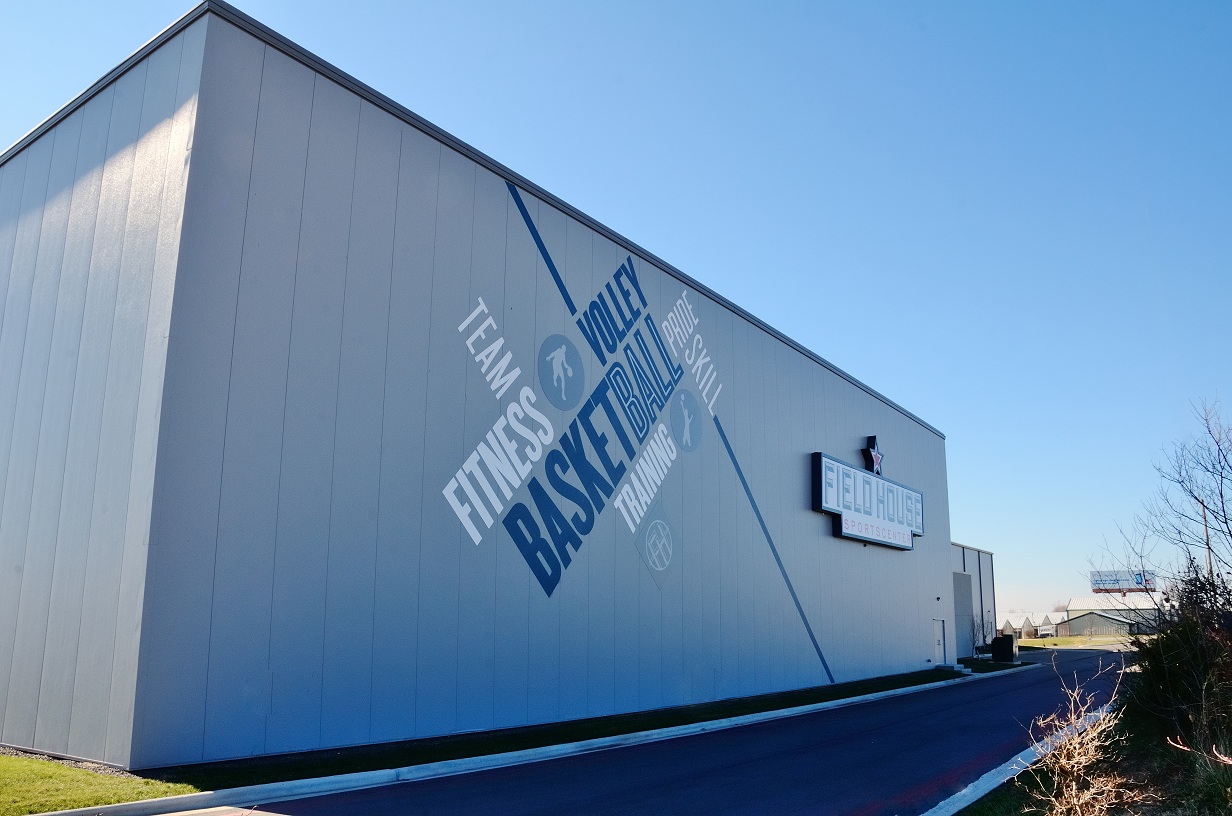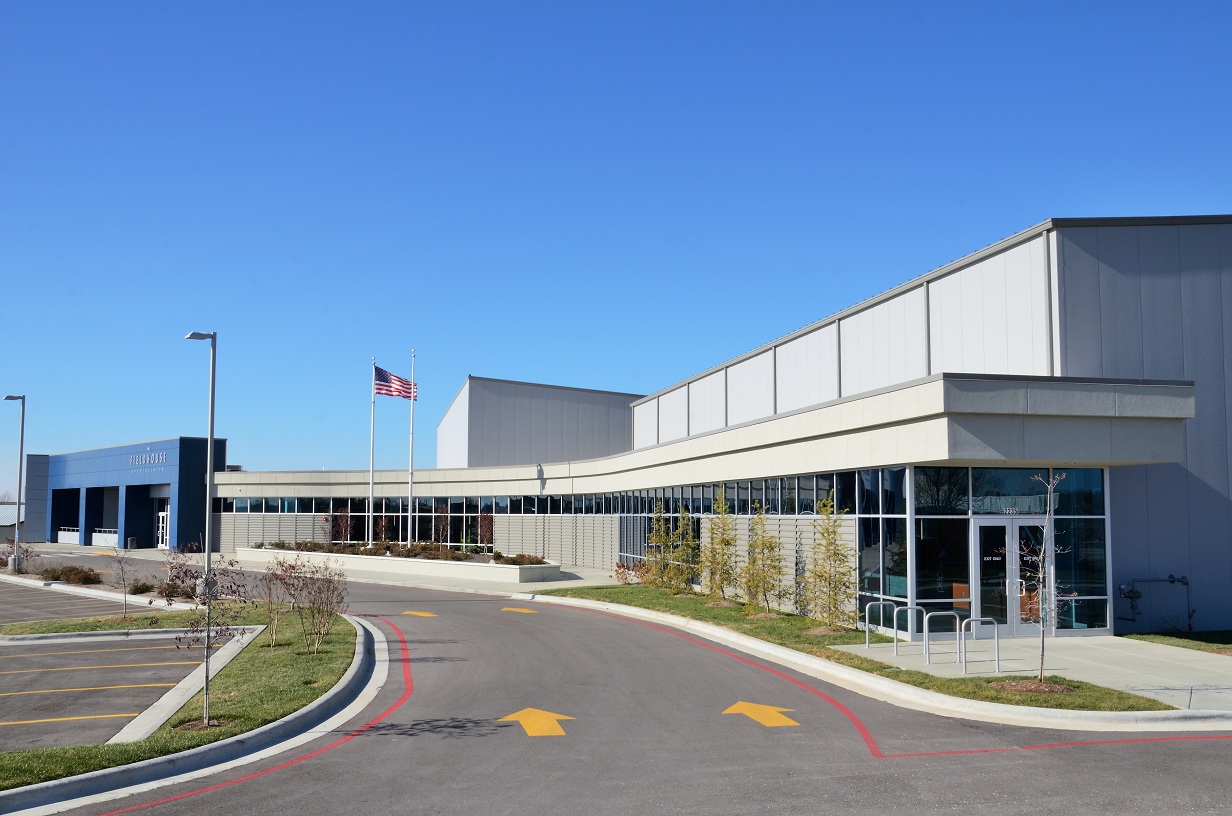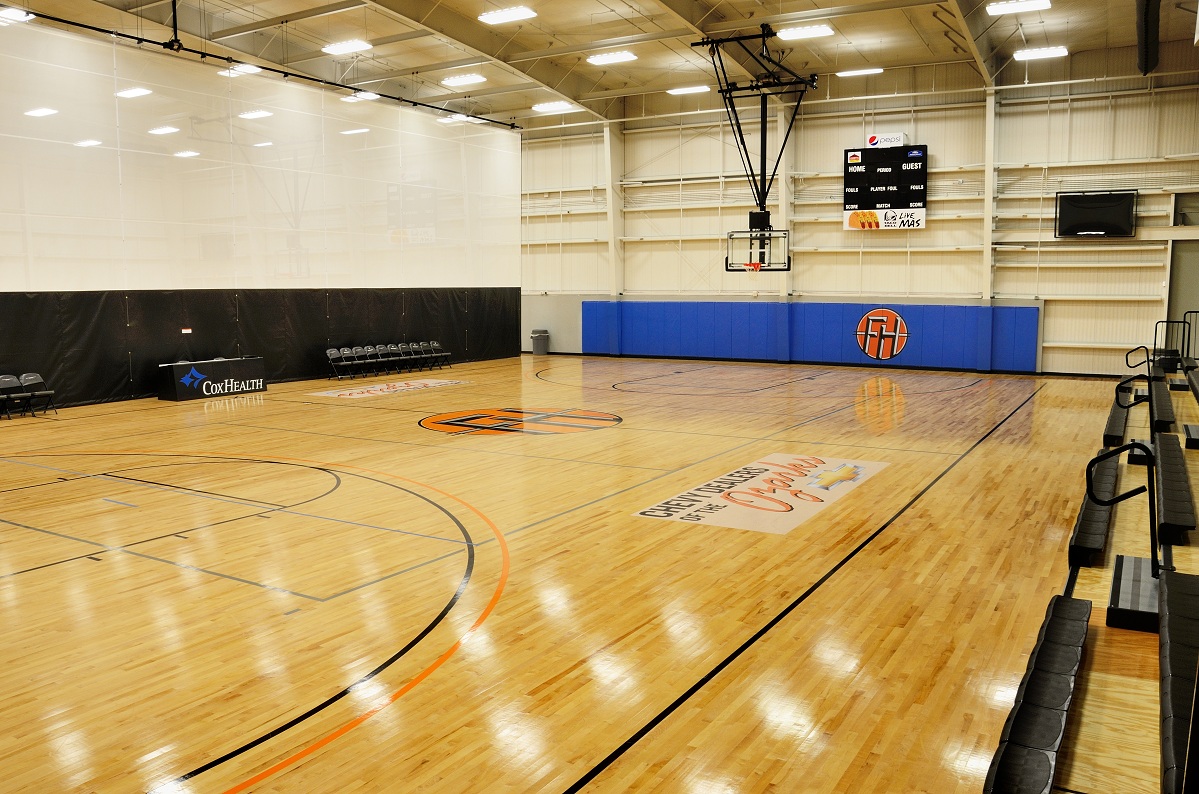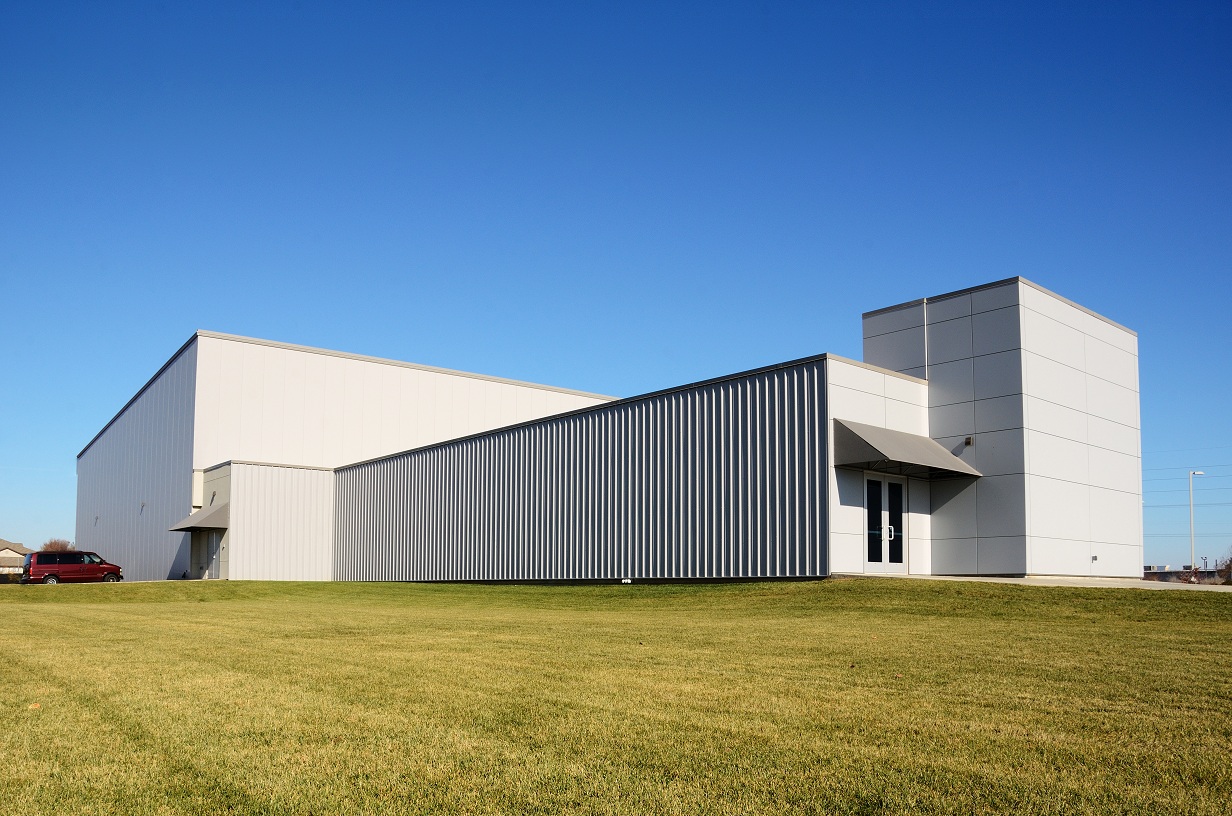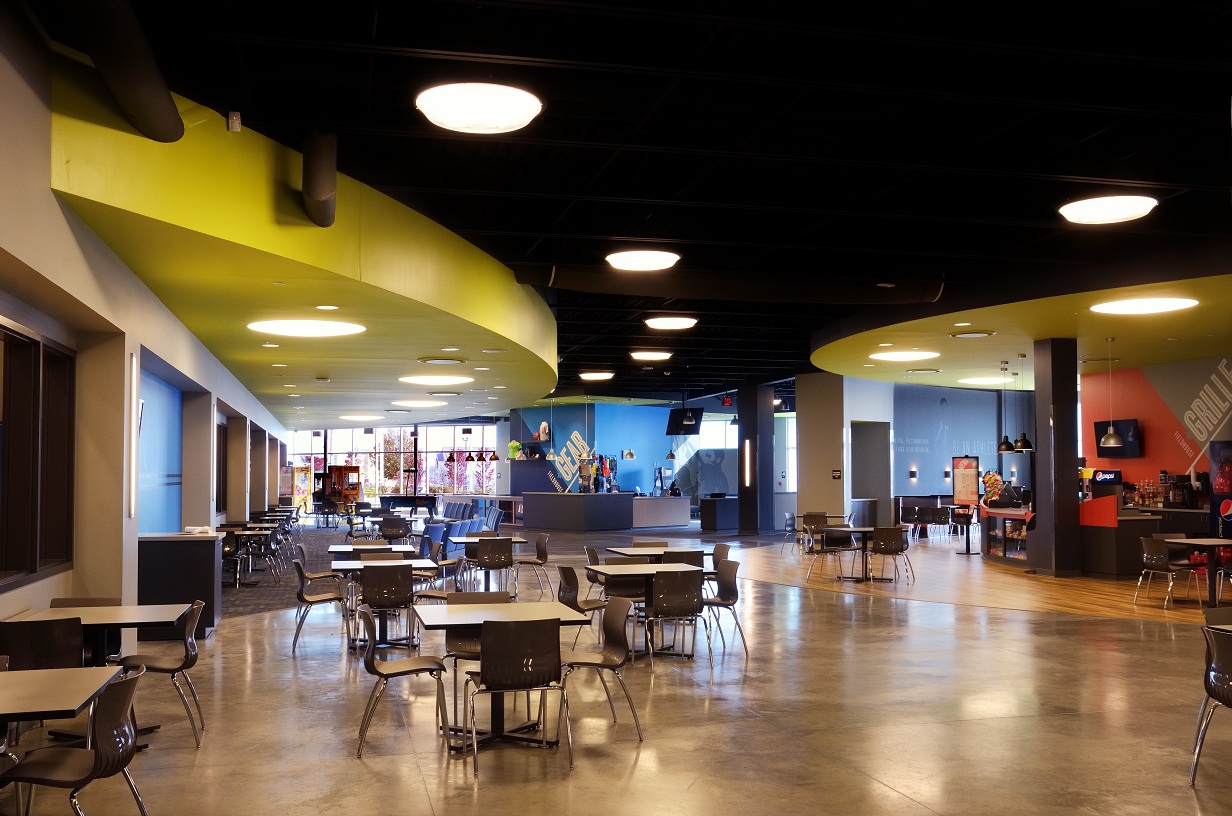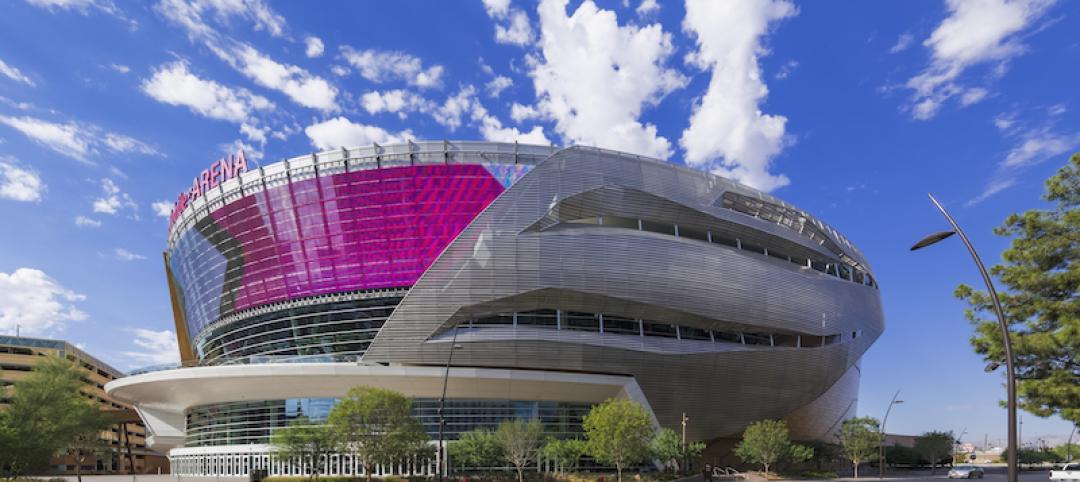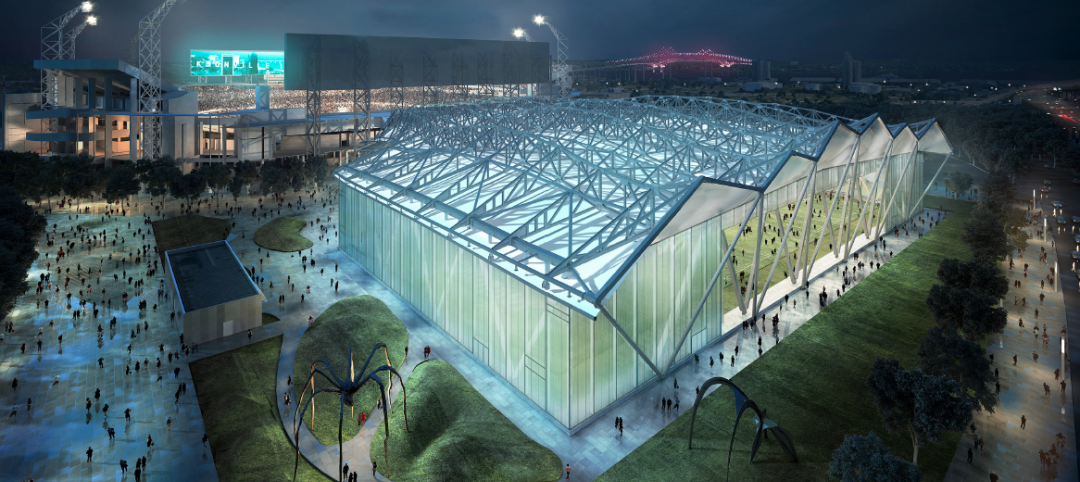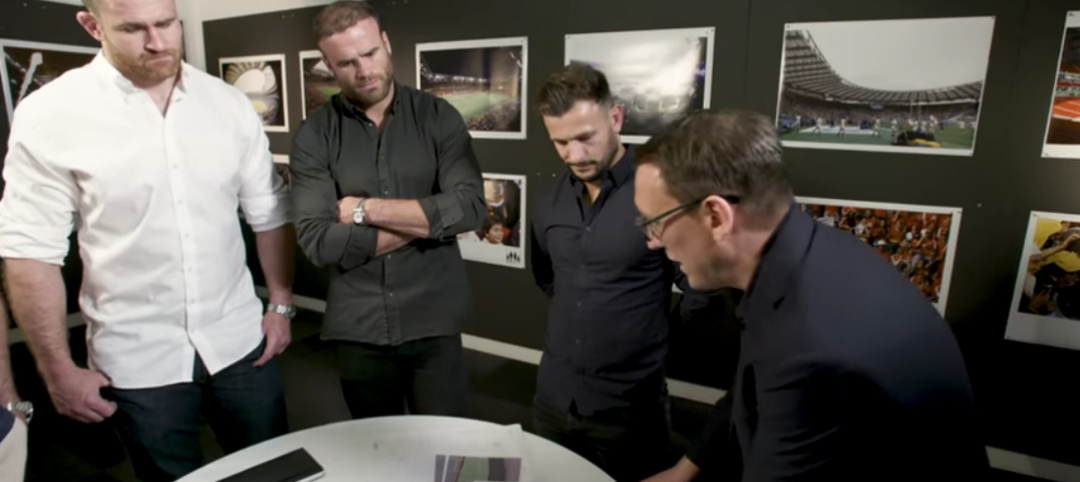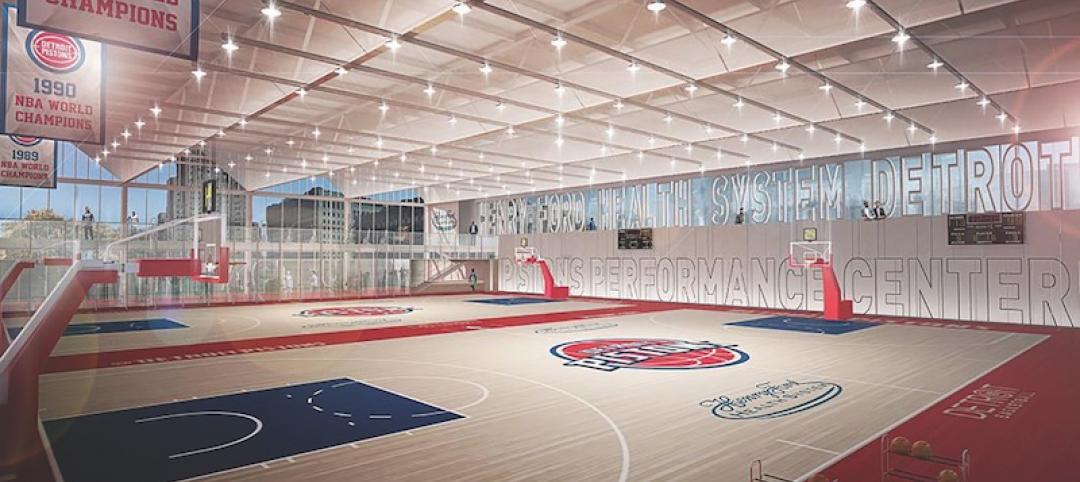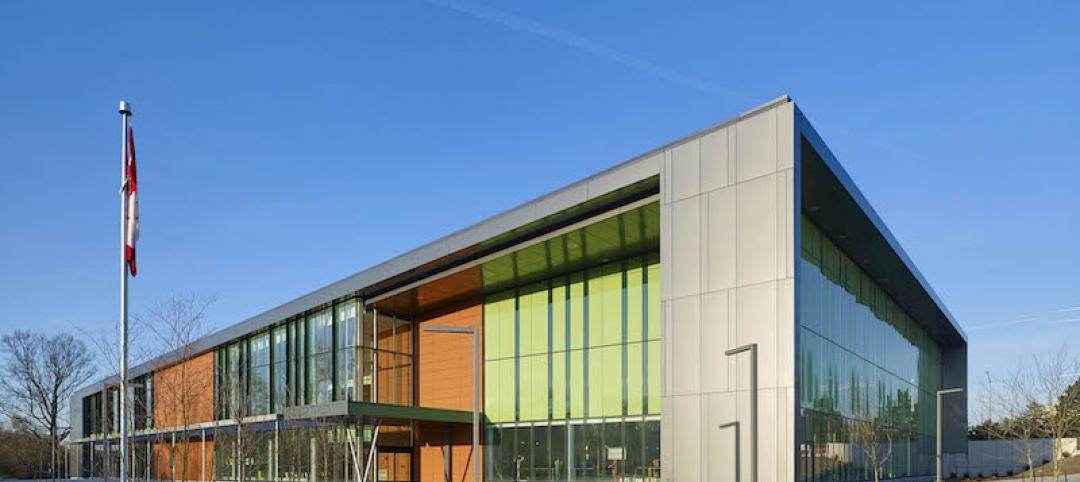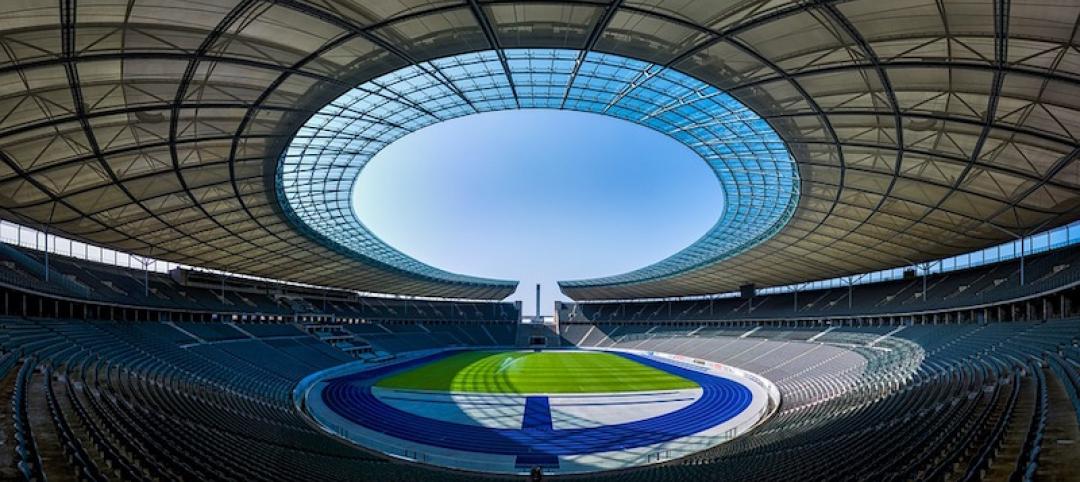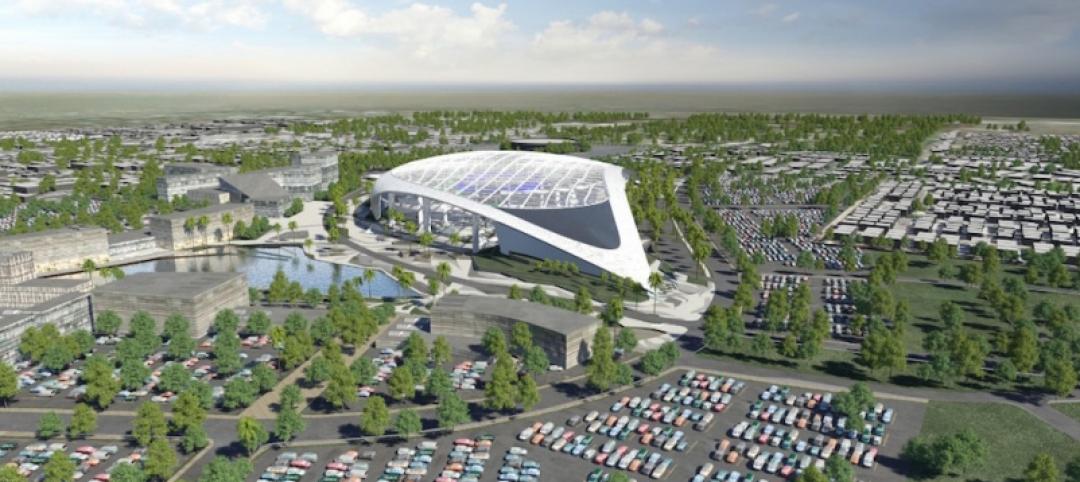Basketball and volleyball take center stage at The Fieldhouse Sportscenter, a multi-purpose sports facility in Springfield, Mo. Attracting student athletes and families from throughout the Midwest, the 46,000-square-foot complex hosts youth basketball and volleyball leagues and tournaments as well as a range of community events and gatherings.
Two separate metal gym buildings accommodate a total of four full-size basketball courts or six volleyball courts. The structures are connected by a structural steel building that provides a common gathering area that includes a restaurant with indoor and outdoor seating, a video arcade, four party/conference rooms and storage areas.
“There were a lot of different elements that had to be tied in correctly to make the three different buildings work together effectively,” says David Ross, director of operations and project manager at Morelock-Ross, the Star builder that led the construction. “One of the most unique elements of this project is the energy-efficient envelope, which includes three-inch-thick insulated metal wall panels and a Simple Saver roof liner system with additional insulation.”
Contributing to the design aesthetic, the buildings combine several different custom exterior finishes.
“The project was designed to provide a distinguished façade along the James River, emphasizing the dynamics of activity and movement,” says Todd Bolin, project architect at H Design Group. “The design intent was to simplify the form and structure of the buildings and tie in the ideals of competition, sportsmanship and camaraderie through murals, signage and apparel.”
Located on a prominent site in the growing southwest part of Springfield, The Fieldhouse adds significant capacity to the city’s youth sports venues and attracts visitors from a 10-state Midwest region.
“There is a facility on the north side of the city that was busting at the seams,” says Craig Naugle, MD, a local physician and the primary investor in the project. “We knew there was a need, and my wife and I wanted to invest in the community that way. It’s really working well as a community center.”
Operating year-round, the facility is able to host upward of 70 teams per weekend in a single venue.
“I think it’s just a great place for families to get together,” Naugle says. “We also have community rooms that people can rent for birthday parties, lunch meetings, business groups and church lock-ins.”
Naugle’s primary goal was to raise the bar for youth sports facilities by providing an authentic playing atmosphere for athletes and their families, many of which travel several hundred miles to compete.
“It provides a much better flow than other facilities I’ve seen around the country,“ he says. “Most facilities tend to be barn-like structures, with a bunch of gyms stacked on top of each other. You get a lot of whistle noise, and kids are constantly distracted. What’s amazing about our facility is that once you’re in the common area looking through the windows, you can hardly hear anything in the gyms.”
The Fieldhouse also offers courtside seating and privacy curtains to provide acoustical separation between the courts.
“When people come here from out of state, they uniformly say they’ve never played basketball in a facility this nice. I hear that time and time again when we host tournaments,” he says.
Naugle is also blown away by the energy efficiency of the facility.
“Our utility bills are at least 25 to 30 percent less than we thought they would be when we were estimating that in our business plan,” he says. “It’s pretty remarkable.”
The complex was designed to accommodate future expansion through a second construction phase that will add an additional two gyms.
Project Credits
Owner/developer: Midwest Events Center LLC
General contractor: Morelock-Ross Builders Inc.
Architect: H Design Group LLC
Civil Engineer: Anderson Engineering
Structural Engineer: Mettemeyer Engineering LLC
MEP Engineer: Colvin Jones Davis LLC
Related Stories
Giants 400 | Oct 20, 2017
Top 40 sports architecture firms
Populous, HOK, and HKS top BD+C’s ranking of the nation’s largest sports sector architecture and AE firms, as reported in the 2017 Giants 300 Report.
Sports and Recreational Facilities | Sep 27, 2017
A soccer team’s fan base could play an integral role in its new stadium’s design and operations
Sacramento Republic FC and HNTB are conducting a contest where the public can submit concept ideas.
Sports and Recreational Facilities | Sep 11, 2017
Mid-size, multi-use arenas setting a trend for the future
While large 20,000-seat sports venues aren’t going away, mid-size venues provide advantages the big arenas do not in a time of budget constraints and the need for flexibility.
AEC Tech | Aug 25, 2017
Software cornucopia: Jacksonville Jaguars’ new practice facility showcases the power of computational design
The project team employed Revit, Rhino, Grasshopper, Kangaroo, and a host of other software applications to design and build this uber-complex sports and entertainment facility.
Sports and Recreational Facilities | Aug 18, 2017
Video: Designing the ideal rugby stadium
HOK invited four world-class rugby players into its London studio to discuss what they would like to see in the rugby stadiums of the future.
Sports and Recreational Facilities | Aug 16, 2017
Detroit Pistons Performance Center hopes to invigorate the community, create an NBA championship team
The facility will be incorporated into the community with public spaces.
Sports and Recreational Facilities | Jul 17, 2017
A new Rec Centre in Toronto links three neighborhoods
Community engagement impacts its design and programming.
Codes and Standards | Jun 21, 2017
Senate bill would prohibit tax money for sports stadium projects
Bipartisan legislation would prevent use of municipal bonds by pro teams.
Building Team Awards | Jun 8, 2017
Team win: Clemson University Allen N. Reeves Football Operations Complex
Silver Award: Clemson gets a new football operations palace, thanks to its building partners’ ability to improvise.
Sports and Recreational Facilities | May 19, 2017
Construction of $2.6 billion L.A. football stadium delayed by heavy rains
The Rams and Chargers won’t be able to move in until the 2020 season.


